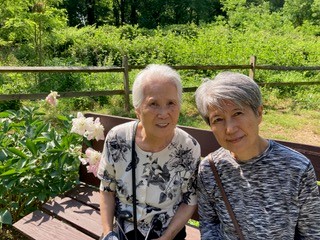Cultural Humility Is Key to Caring for Communities of Color
Cultural Humility Is Key to Caring for Communities of Color
When her mother said she no longer wanted to be poked, prodded, and tested by doctors striving to treat her cancer, Jin Yang initiated a critically important – yet relatively uncommon – conversation with physicians.

Let’s consider the possibility of hospice care, with its focus on comfort rather than a cure, Yang suggested.
A health care professional herself, Yang had a deep familiarity with hospice. She’d seen some of her terminal patients benefit from it. She thought her mother might, too.
Indeed, many millions of people have benefitted from hospice care in the United States. For example, during the five-year period from 2016 through 2020, there were 7.8 million Medicare-insured hospice users in our country, according to the National Hospice and Palliative Care Organization. This number does not include those covered by private insurance or philanthropy.
So what made Yang’s decision to investigate the possibility of hospice for her mother uncommon? Hospice utilization among communities of color – particularly the Korean community of which Yang is a part – has been traditionally lower than among their white counterparts.
This underutilization is something that Yang and Gilchrist want to change to ensure that all communities – Asian, Black, Hispanic and White — can receive the care they deserve and desire.
Deep disparities
Medicare guarantees insurance coverage for up to 180 days of hospice care for all residents nationwide. But some are more likely to avail themselves of the offering than others.
In Maryland, 53.07 percent of White Medicare beneficiaries who died in 2019 passed away in hospice. The rates were significantly lower for Hispanic (38.95 percent), Black (37.17 percent) and Asian (36.47 percent) beneficiaries. These data are presented in a diversity project report by the Hospice & Palliative Care Network of Maryland.
Now 65 years old, Jin Yang — a retired pediatric physical therapist with a special interest in issues associated with death and dying — speculates that lack of awareness about hospice, language barriers, and cultural differences play a part in the relatively low utilization rate among Koreans.
With the help of Gilchrist, the Yang family – Jin, her siblings, and her mother, Hong Bo Yang – were able to overcome the typical obstacles. Yang was well aware of hospice, having encountered it multiple times during her career. And various staff, including Gilchrist haplain John Yoo, helped with both language and culture.
Born in Korea, Yoo speaks Korean and is attuned to differences between Korean and American culture. Yang gives Yoo a lot of credit for making her mother’s experience in hospice successful.
For his part, Yoo says the key to caring for a diverse population is cultural humility. “You have to really know what Korean culture is like – what any other culture is like – to deliver culturally competent care,” he said.
Thanks to Yoo and others, Yang says, “I quickly came to rely on their support, knowing I could pick up the phone, explain our needs, and somebody would respond within minutes if not faster.”
Yang was so impressed with Gilchrist’s level of care that she has since found herself wondering: “Gosh, why can’t the entire health care field be like this?”
At the age of 91, Yang’s mother died at home, just as she wanted to, Yang said, adding that she hopes others will avail themselves of hospice so they can spend their final chapter of life on their own terms.
“Hopefully, little by little, Koreans will become more aware of the benefits of hospice and the choices that family members can make when they feel that their care of their loved one is all up to them,” Yang said. “Gilchrist … was so incredibly supportive of our entire family.”


